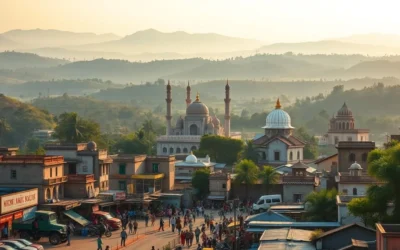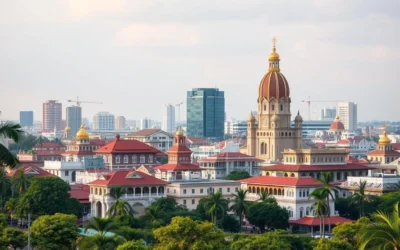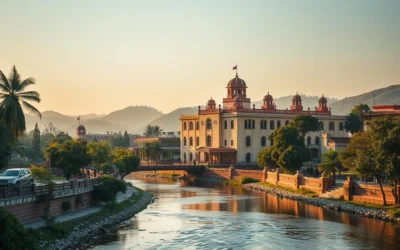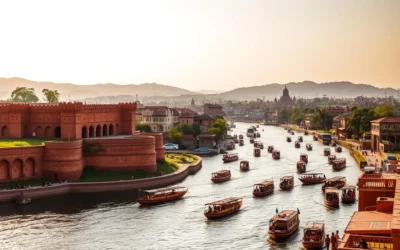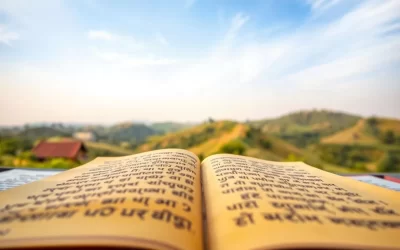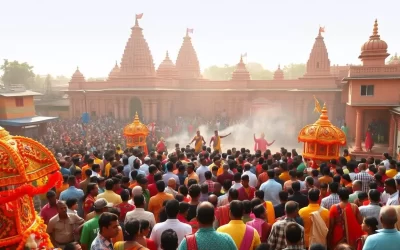Planning a trip to Odisha can be a thrilling experience, especially when you’re aware of the best time to visit. Located between the Eastern Ghats and the Bay of Bengal, Odisha’s unique geography creates distinct weather patterns that significantly impact your travel experience.
Understanding the seasonal variations is crucial for a comfortable and enjoyable trip to this eastern Indian gem. Whether you’re interested in temple tours in Bhubaneswar or beach relaxation in Puri, timing can make or break your adventure.
This comprehensive travel guide will help you navigate Odisha’s climate to maximize your sightseeing opportunities. By the end of this guide, you’ll be equipped with the knowledge needed to plan your perfect trip.
Understanding Odisha’s Climate: A Year-Round Overview
The climate in Odisha varies significantly throughout the year, influenced by its geography. To understand the best time to visit, it’s crucial to grasp the overall climate patterns.
Geographical Influences on Odisha’s Weather
Odisha’s geographical location on the eastern coast of India exposes it to a variety of climatic conditions. The state’s terrain, which includes coastal areas, hills, and forests, further diversifies its weather patterns. The Bay of Bengal plays a significant role in moderating Odisha’s climate, with the coastal regions generally experiencing milder temperatures compared to the interior.
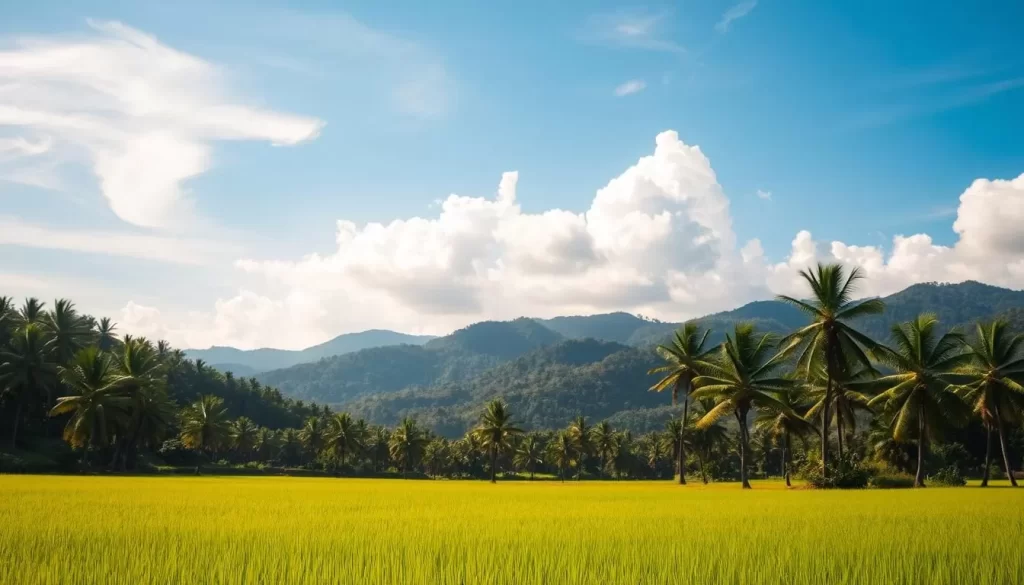
The Three Distinct Seasons of Odisha
Odisha experiences three distinct seasons: winter, summer, and monsoon.
- Winter (October-February): Pleasant temperatures ranging from 10°C to 25°C make it ideal for sightseeing.
- Summer (March-June): Temperatures soar up to 45°C during the day, though evenings can be more bearable.
- Monsoon (July-September): Heavy rainfall transforms the landscape, creating lush greenery but also posing travel challenges.
Understanding theseseasonal patternsis key to planning your trip according to your preferences and activities. The transition periods between seasons can offer unique advantages, with moderate weather and fewer tourists.
Each season offers a different experience of Odisha, from the clear winter skies to the vibrant post-monsoon landscapes. Timing your visit according to your comfort and planned activities is essential.
Winter Wonderland: October to February
From October to February, Odisha is at its best, showcasing a winter landscape that’s both breathtaking and invigorating. You can expect a serene environment, perfect for exploring the outdoors.
Temperature Ranges and Weather Conditions
During the winter season, Odisha experiences an average temperature range of 10°C to 25°C, making it an ideal time to visit. The comfortable weather conditions allow you to enjoy various outdoor activities without the harshness of extreme temperatures.
Why Winter is Considered the Prime Travel Season
Winter is considered the prime travel season in Odisha due to its pleasant weather. You can enjoy exploring various places without the discomfort of extreme heat or cold. The moderate climate makes it an ideal time for sightseeing and outdoor adventures.
Winter Wildlife Opportunities and Bird Watching
Odisha transforms into a bird watcher’s paradise during winter, with numerous migratory species arriving from far-off regions like Siberia and Central Asia. Chilika Lake and Bhitarkanika National Park are particularly vibrant during this season, hosting a wide variety of bird species. The presence of optimal water levels in various bodies creates perfect habitats for both resident and migratory birds, making it a great place for bird enthusiasts to explore.
You can spot a range of wildlife, including saltwater crocodiles, elephants, tigers, and leopards, as they frequent water sources. The comfortable temperatures make long wildlife safaris and bird watching expeditions more enjoyable and productive.
Summer Sojourn: March to June
Summer in Odisha is characterized by sweltering heat, making the choice of time and place for visitation crucial. While the afternoons are usually too hot for outdoor activities, the early mornings and evenings can be quite pleasant.
Navigating the Heat: Temperature Patterns
During the summer months, Odisha experiences a significant rise in temperature, often reaching highs that make outdoor exploration challenging. The coastal regions, however, tend to be cooler than the interior parts due to the moderating influence of the sea breeze.
The temperature in coastal areas like Puri and Gopalpur is typically 3-5°C lower than in cities like Bhubaneswar and Cuttack. This makes coastal destinations attractive during the summer.
Early Morning and Evening Exploration Tips
To make the most of your visit, plan your outdoor activities during the early morning or late evening when the temperature is relatively lower. This is the best time to enjoy sightseeing without the discomfort of the midday heat.
Many tourist attractions, including the famous Konark Sun Temple, are best visited early in the morning to avoid both the heat and the crowds that gather later in the day.
Coastal Retreats for Summer Relief
Odisha’s coastline offers several beach destinations that provide relief from the summer heat. Places like Puri, Gopalpur, and Chandipur are popular for their natural cooling due to the sea breezes.
- These destinations offer a range of accommodations, from budget-friendly options to luxury resorts, many of which have water activities and other amenities.
- Coastal resorts often have special summer packages that include early morning and evening activities, helping you plan your day around the heat.
- Visiting these places visit during the summer can be a great way to enjoy your summer vacation.

Monsoon Months: July to September
The monsoon months of July to September transform Odisha, presenting a unique blend of natural beauty and potential hazards. During this time, the state undergoes a significant transformation.
Rainfall Patterns and Regional Variations
Odisha experiences varied rainfall patterns during the monsoon season. The coastal regions tend to receive more rainfall compared to the interior parts of the state. This variation is crucial for travelers to understand when planning their trip.
| Region | Average Rainfall | Characteristics |
|---|---|---|
| Coastal | High | Frequent cyclones and heavy rains |
| Interior | Moderate | Less prone to cyclones, more agricultural impact |
Flood Risks and Travel Challenges
The monsoon rains bring with them the risk of floods, particularly in the major river basins. Travelers should be aware of the potential disruptions and plan accordingly. Major rivers in the state occasionally overflow, causing floods.
The Lush Transformation of Odisha’s Landscape
Despite the challenges, the monsoon season transforms Odisha into a lush paradise. The water bodies are rejuvenated, and the landscape becomes vibrant and green. You’ll witness the remarkable transformation as the landscape shifts from parched browns to vibrant greens within weeks of the first rains.
- The state’s agricultural regions become particularly picturesque, with paddy fields creating emerald carpets across the countryside.
- Waterfalls throughout the state, particularly in the Eastern Ghats region, reach their spectacular peak flow during this time.
- The monsoon rains rejuvenate Odisha’s numerous water bodies, from the massive Chilika Lake to smaller ponds and rivers across the state.

Odisha, India: Best Months for a Weather-Savvy Trip – Expert Recommendations
When planning your trip to Odisha, India, timing is everything. The state’s diverse climate means that some months are more suitable for travel than others. Understanding the best time to visit can make a significant difference in your overall experience.
November to February: The Ideal Window
The period from November to February is considered the ideal time to visit Odisha. During these months, the weather is pleasant, with comfortable temperatures and dry, clear skies. This makes it perfect for sightseeing and outdoor activities. You can explore the state’s numerous attractions without the discomfort of extreme temperatures or rainfall. The best time to visit Orissa is during this period, making it a peak season for tourists.

Shoulder Season Advantages: October and March
While November to February is the peak season, the shoulder seasons of October and March offer several advantages. These months provide many of the benefits of the peak season, with fewer crowds and better accommodation availability. In October, the monsoon season ends, and the weather gradually becomes more pleasant. March, on the other hand, marks the beginning of the warming trend, but it’s still comfortable for sightseeing. You can enjoy a more peaceful travel experience during these months, with lower hotel rates and more negotiable prices for services. Many consider these months to offer the best value-for-money, balancing good weather with lower tourist density.
Visiting during the shoulder season also means you can experience local festivals and events with fewer international tourists. This can lead to a more authentic experience, allowing you to engage more deeply with the local culture. By choosing to visit during these periods, you can make the most of your time visit to Odisha.
Festival Calendar: Timing Your Visit with Cultural Celebrations
To get a true feel of Odisha’s culture, you should consider visiting during one of its many festivals throughout the year. Odisha’s cultural calendar is rich with celebrations that reflect its diverse heritage and traditions.
Winter Festivals: Konark Dance Festival and Tribal Celebrations
Winter is a great time to experience Odisha’s cultural richness through its festivals. The Konark Dance Festival is a highlight, showcasing classical dances against the backdrop of the magnificent Konark Sun Temple. Additionally, various tribal festivals during this season offer a glimpse into the traditional practices and celebrations of Odisha’s indigenous communities.
Summer Spectacles: Rath Yatra and Chandan Yatra
Despite the heat, summer in Odisha is a vibrant season marked by significant festivals. The Rath Yatra in Puri is one of the most famous chariot festivals in the country, attracting millions of devotees. Another notable celebration is the Chandan Yatra, a ritualistic festival celebrated with great fervor at the Jagannath Temple.
Monsoon Festivities Worth Considering
During the monsoon, Odisha transforms into a lush green landscape, providing a unique backdrop for its festivals. Celebrations like Raja Parba, Nuakhai, and Ganesh Chaturthi are significant during this time. Raja Parba honors Mother Earth, Nuakhai is a harvest festival, and Ganesh Chaturthi, while not unique to Odisha, takes on special local characteristics. These festivals are less crowded, offering authentic local experiences amidst the rains.
Visiting Odisha during these festivals not only enriches your cultural experience but also allows you to see the state’s vibrant culture firsthand. Whether it’s the grandeur of Rath Yatra or the serene beauty of Odisha’s monsoon landscape during Raja Parba, there’s always something to cherish in this beautiful country.
Regional Weather Variations: Coastal vs. Interior Odisha
Odisha’s diverse geography leads to distinct weather patterns across different regions. Understanding these variations is essential for travelers to make the most of their trip.
Coastal Areas: Puri, Konark, and Gopalpur
The coastal regions of Odisha, including Puri, Konark, and Gopalpur, are known for their beautiful beaches and relatively moderate climate compared to the interior. If you’re looking for the best beaches in Odisha, India, these destinations are top on the list.
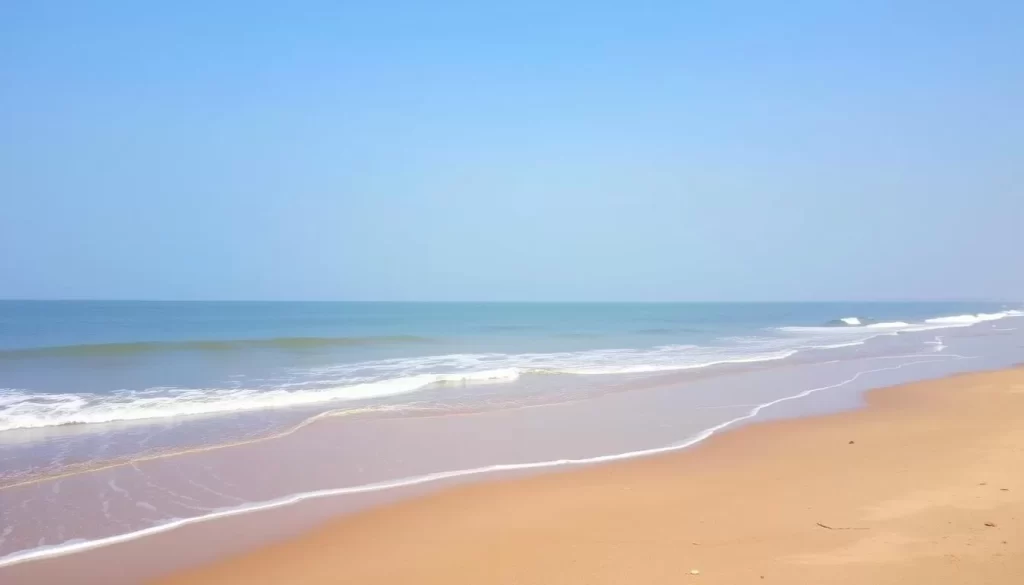
- The coastal areas experience a moderating influence from the sea, keeping temperatures relatively stable.
- Summer temperatures are generally milder, while winters are warmer compared to interior regions.
Interior Destinations: Bhubaneswar, Cuttack, and Tribal Regions
Interior destinations like Bhubaneswar, Cuttack, and the tribal regions have a different weather profile. If you’re interested in exploring historical sites in Odisha, India, Bhubaneswar is a must-visit.

- You’ll find that these areas experience more extreme temperature variations throughout the year.
- Summer temperatures in interior regions regularly exceed 40°C from April through June.
- Winter brings cooler conditions, with nighttime temperatures occasionally dropping to 10°C or lower.
The time of your visit to Odisha significantly impacts your experience, with the weather varying greatly across different regions and temperatures fluctuating across the state. Planning your trip according to the weather in different places will help you enjoy your travel to the fullest.
Month-by-Month Weather Guide for Odisha Travelers
To make the most of your trip to Odisha, it’s essential to know what the weather is like during different months. This knowledge will help you prepare for the climate conditions and make informed decisions about the best time to visit.
Temperature, Rainfall, and Humidity Expectations
Odisha’s climate varies significantly across the year. The winter months (October to February) are characterized by pleasant temperatures, ranging from 10°C to 25°C, making it an ideal time for sightseeing and outdoor activities. During this period, the weather is generally dry and clear, with minimal rainfall.
In contrast, the summer months (March to June) bring rising temperatures and increasing humidity, with heat being a significant factor. The monsoon season (July to September) brings substantial rainfall, transforming the landscape into a lush green terrain.
| Month | Temperature Range (°C) | Rainfall Expectation | Humidity Level |
|---|---|---|---|
| January | 15-25 | Low | Moderate |
| February | 18-28 | Low | Moderate |
| March | 22-32 | Low | Increasing |
| July | 25-30 | High | High |
| October | 20-28 | Moderate | Decreasing |
Packing Recommendations for Each Month
Adapting your packing list according to the month of your visit is crucial. For instance, during January and February, you should pack light woolens for cooler evenings and early mornings, along with comfortable cotton clothing for daytime.
As summer approaches, in April and May, prioritize ultra-lightweight, loose-fitting clothing, high-SPF sunscreen, and electrolyte supplements to manage the heat.
For the monsoon months (July to September), include waterproof footwear, quick-dry clothing, and quality rain gear in your packing list. As the season transitions into October, pack layers for temperature variations and consider both rain gear and lighter clothing.
Activity-Based Timing: When to Visit for Specific Experiences
Odisha, a state with a rich cultural heritage and diverse natural landscapes, offers various experiences that are best enjoyed during specific times of the year. Whether you’re interested in exploring historical sites, going on wildlife safaris, or enjoying beach vacations, timing your visit right can significantly enhance your experience.
Temple Tours and Heritage Sites
Odisha is renowned for its ancient temples, including the famous Jagannath Temple in Puri and the Konark Sun Temple. The best time to visit these heritage sites is from October to February when the weather is pleasant, making sightseeing comfortable. You can explore these sites without the harsh sun or the rain hindering your experience.

Wildlife Safaris and Nature Experiences
For those interested in wildlife, Odisha’s sanctuaries, such as the Simlipal National Park and Hadgarh Wildlife Sanctuary, offer exciting opportunities. The best time for wildlife safaris is from November to June, avoiding the monsoon season when many areas are inaccessible. Early morning and late afternoon are ideal times for spotting wildlife.

Beach Vacations and Water Activities
Odisha’s coastline offers beautiful beaches like Puri Beach and Chandipur Beach. The best beach conditions are from November through February, with pleasant temperatures, calm seas, and clear, sunny days. Water sports and boating are safest and most enjoyable between December and February. If you visit during summer, limit your beach time to early mornings and late afternoons.
- Enjoy the best beach conditions from November to February.
- Puri Beach is most comfortable during winter months.
- Water sports are safest between December and February.
Conclusion: Planning Your Weather-Perfect Odisha Adventure
Now that you’re familiar with Odisha’s weather, the best time to visit is clearer. The winter months from November to February stand out as the overall best time to visit for most travelers, offering the ideal balance of comfortable temperatures and dry conditions.
As you plan your trip, consider your specific interests—whether temple architecture, wildlife, beaches, or cultural festivals. Remember that regional variations exist between coastal and interior areas, which might influence your itinerary planning and accommodation choices.
To make the most of your holiday, book accommodations well in advance if traveling during the peak winter season or major festivals. Remain flexible with your daily schedule, particularly during summer or monsoon months when weather conditions may necessitate last-minute adjustments.
With this weather-savvy approach, you’ll maximize your experience of Odisha, a culturally rich eastern Indian state. Whether you’re looking for a trip filled with cultural explorations or a relaxing getaway, Odisha has something to offer in every month of the year.
The above is subject to change.
Check back often to TRAVEL.COM for the latest travel tips and deals.

